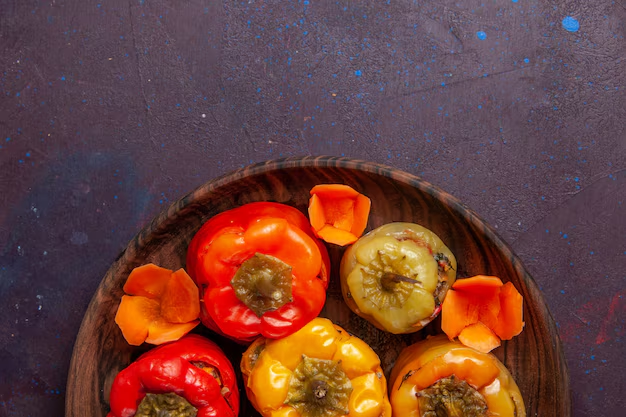Keeping Bell Peppers Fresh: Is the Refrigerator Your Best Bet?
Bell peppers, with their vibrant colors and crisp texture, are a staple in many kitchens around the world. They’re not only versatile and delicious but also packed with vitamins and low in calories. But when it comes to storing bell peppers effectively, there's a common question that arises—should you store them in the refrigerator? Let's explore this in depth, looking at various aspects of food storage and shelf life to determine the best approach.
Understanding Bell Pepper Storage Needs
The Basics of Bell Pepper Storage
Bell peppers, like many fresh vegetables, are perishable. Their storing needs are often driven by their high water content, which is both a blessing and a challenge. Here are some fundamental insights into helping your peppers stay fresh for longer.
- High Water Content: Bell peppers contain a large amount of water, which can easily evaporate, leading to shrinkage and wilting.
- Temperature Sensitivity: They thrive best when kept cool and away from direct sunlight.
Room Temperature vs. Refrigerator: Which Is Better?
At room temperature, bell peppers can maintain their freshness for a short period. If you're planning to use them within the next couple of days, this might suffice. However, storing them in the refrigerator generally provides a longer shelf life, maintaining their crispness for up to a week or more.
Key Insight: If you plan to consume your bell peppers within 1-2 days, keeping them at room temperature is adequate. For longer storage, refrigeration is recommended.
Pros and Cons of Storing Bell Peppers in the Refrigerator
Benefits of Refrigeration
Refrigerating bell peppers can be advantageous for several reasons:
- Extended Shelf Life: Refrigeration significantly slows down the decomposition process, allowing the peppers to last longer.
- Maintained Crispness: The cool environment helps preserve the pepper's texture.
- Nutrient Retention: Cold temperatures can help maintain the vitamin content better compared to room-temperature storage.
Downsides to Consider
While refrigeration has its perks, there are also potential drawbacks:
- Flavor Alteration: Cold storage can sometimes slightly dull the vibrant flavors of fresh peppers.
- Moisture Loss: Improper storage in the fridge can lead to drying out, although this can be mitigated by proper wrapping.
Balancing Act: To balance these pros and cons, ensure that when you refrigerate, you place bell peppers in a vegetable crisper within a loosely tied bag to allow for air circulation and minimize moisture loss.
Practical Tips for Storing Bell Peppers
Best Practices for Maximum Freshness
✔️ Use a Crisper Draw: Store your peppers in the crisper section of the refrigerator to optimize humidity and airflow.
✔️ Not Too Wet, Not Too Dry: Avoid storing them when wet. Wash and dry completely if you rinse before storage.
✔️ Keep Whole: If possible, keep bell peppers whole until you are ready to use them. Sliced or cut peppers tend to spoil quicker.
✔️ Use a Perforated Bag: Store in a loosely closed perforated plastic bag to retain moisture without trapping excess water.
Storing Cut Bell Peppers
If you’ve already cut your bell peppers, it’s crucial to store them properly to retain their freshness:
- Use Airtight Containers: Once cut, place peppers in airtight containers in the refrigerator to minimize oxidation and moisture loss.
- Cover with Paper Towel: Line your container with a paper towel to absorb excess moisture.
Quick Tip: Check on your sliced peppers daily to ensure they are still fresh and haven’t developed any mold.
Other Related Considerations
Knowing When to Discard
It's not always easy to know when peppers have reached the end of their shelf life. Here are some indicators:
- Wrinkling: Sign of moisture loss and aging.
- Discoloration: Marks or darker patches suggest decay.
- Slimy Texture: This indicates bacterial growth, a sure sign to discard.
Utilizing Peppers on Their Last Days
When bell peppers are nearing the end of their freshness, consider these culinary uses before they spoil:
- Roast or Grill: Cooking can often revitalize peppers that are a bit past their prime.
- Add to Stir-Frys or Soups: These methods mask slight textural changes while keeping meals delicious.
Impact of Bell Pepper Storage on Food Waste
Storing bell peppers efficiently can also aid in reducing food waste:
- Planned Consumption: Buying in amounts aligned with your consumption can reduce leftover spoilage.
- Regenerate Kitchen Scraps: Create compost with the unusable parts to foster a sustainable cycle.
🌟 Summary: Quick Tips for Storing Bell Peppers 🌟
- Room Temperature: Use only if consuming within 1-2 days.
- Refrigerator: Best for extending shelf life to up to a week or more.
- Avoid Moisture: Keep dry before storing; use perforated bags.
- Airtight for Cuts: Essential for storing sliced peppers.
- Food Waste: Plan purchases and recycle scraps.
Concluding Thoughts
Deciding whether to store bell peppers in the refrigerator depends on your planned use and the time frame. For the freshest taste and extended life, refrigeration is often recommended, along with following storage best practices. This not only helps maintain the peppers' nutritional benefits but also contributes to more sustainable food habits by minimizing waste. Empowered with this knowledge, you can now confidently decide how best to store your bell peppers in a way that suits your lifestyle and culinary needs, ensuring you get the best out of every last pepper.
